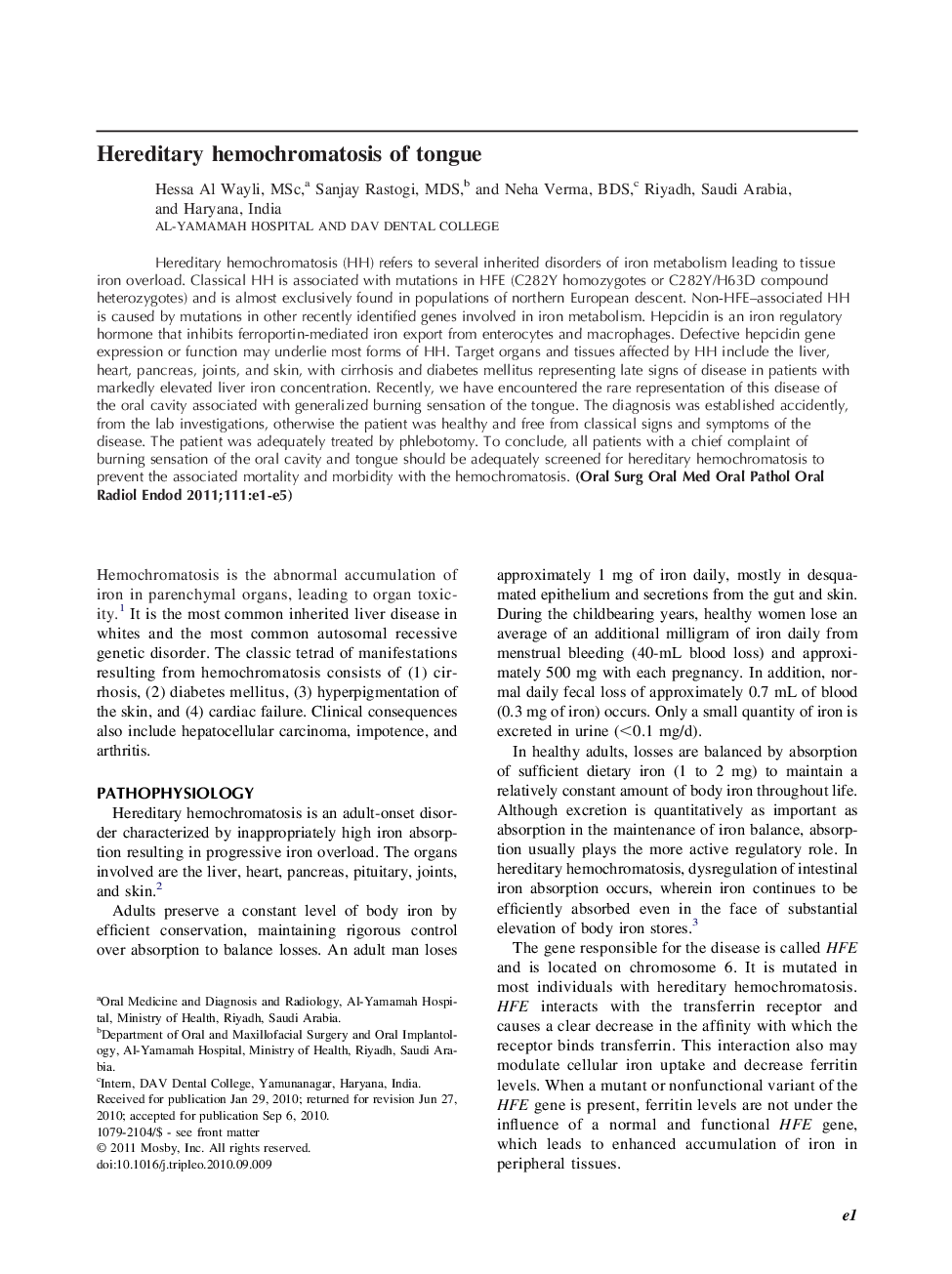| Article ID | Journal | Published Year | Pages | File Type |
|---|---|---|---|---|
| 3167103 | Oral Surgery, Oral Medicine, Oral Pathology, Oral Radiology, and Endodontology | 2011 | 5 Pages |
Hereditary hemochromatosis (HH) refers to several inherited disorders of iron metabolism leading to tissue iron overload. Classical HH is associated with mutations in HFE (C282Y homozygotes or C282Y/H63D compound heterozygotes) and is almost exclusively found in populations of northern European descent. Non-HFE–associated HH is caused by mutations in other recently identified genes involved in iron metabolism. Hepcidin is an iron regulatory hormone that inhibits ferroportin-mediated iron export from enterocytes and macrophages. Defective hepcidin gene expression or function may underlie most forms of HH. Target organs and tissues affected by HH include the liver, heart, pancreas, joints, and skin, with cirrhosis and diabetes mellitus representing late signs of disease in patients with markedly elevated liver iron concentration. Recently, we have encountered the rare representation of this disease of the oral cavity associated with generalized burning sensation of the tongue. The diagnosis was established accidently, from the lab investigations, otherwise the patient was healthy and free from classical signs and symptoms of the disease. The patient was adequately treated by phlebotomy. To conclude, all patients with a chief complaint of burning sensation of the oral cavity and tongue should be adequately screened for hereditary hemochromatosis to prevent the associated mortality and morbidity with the hemochromatosis.
